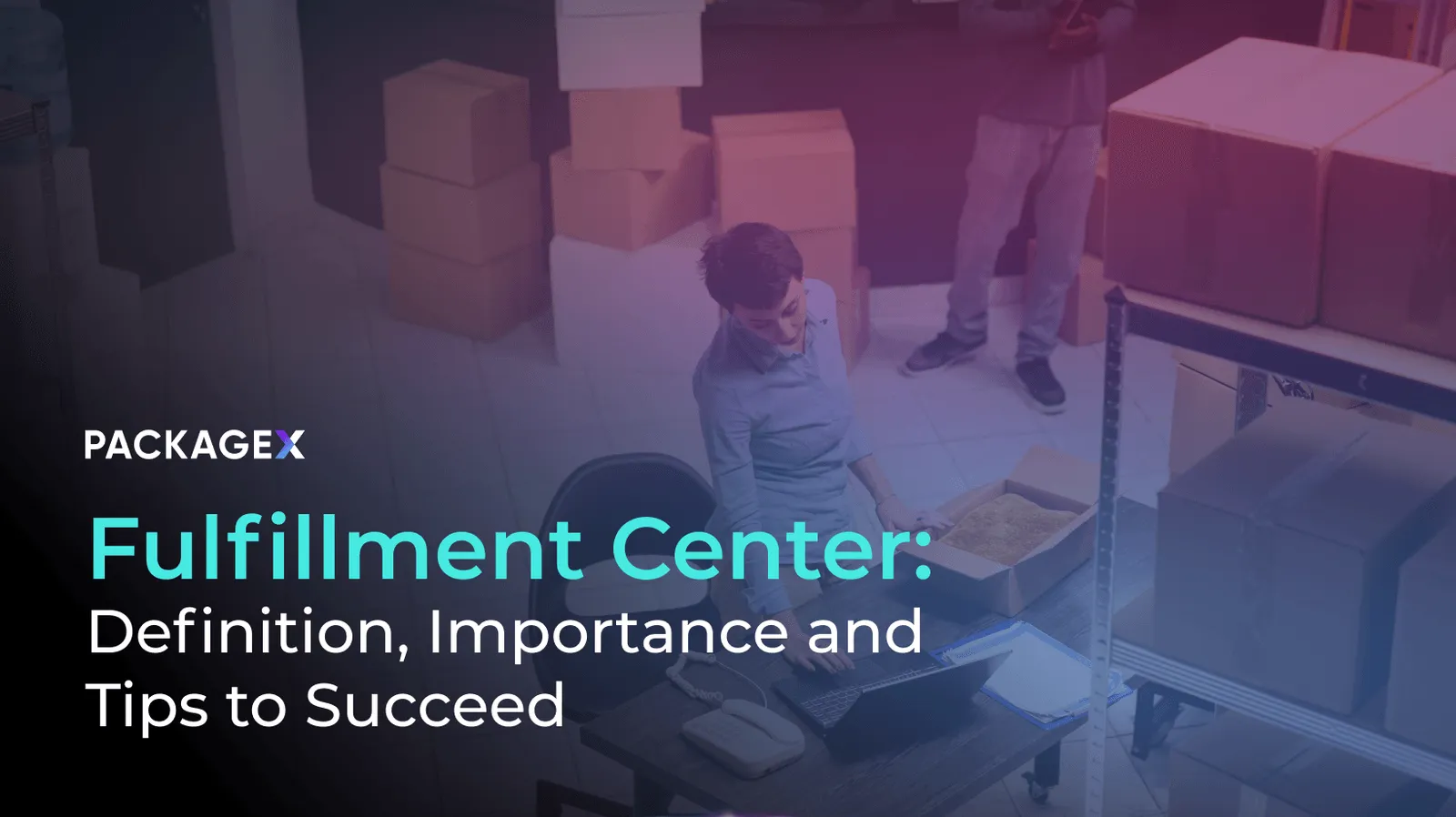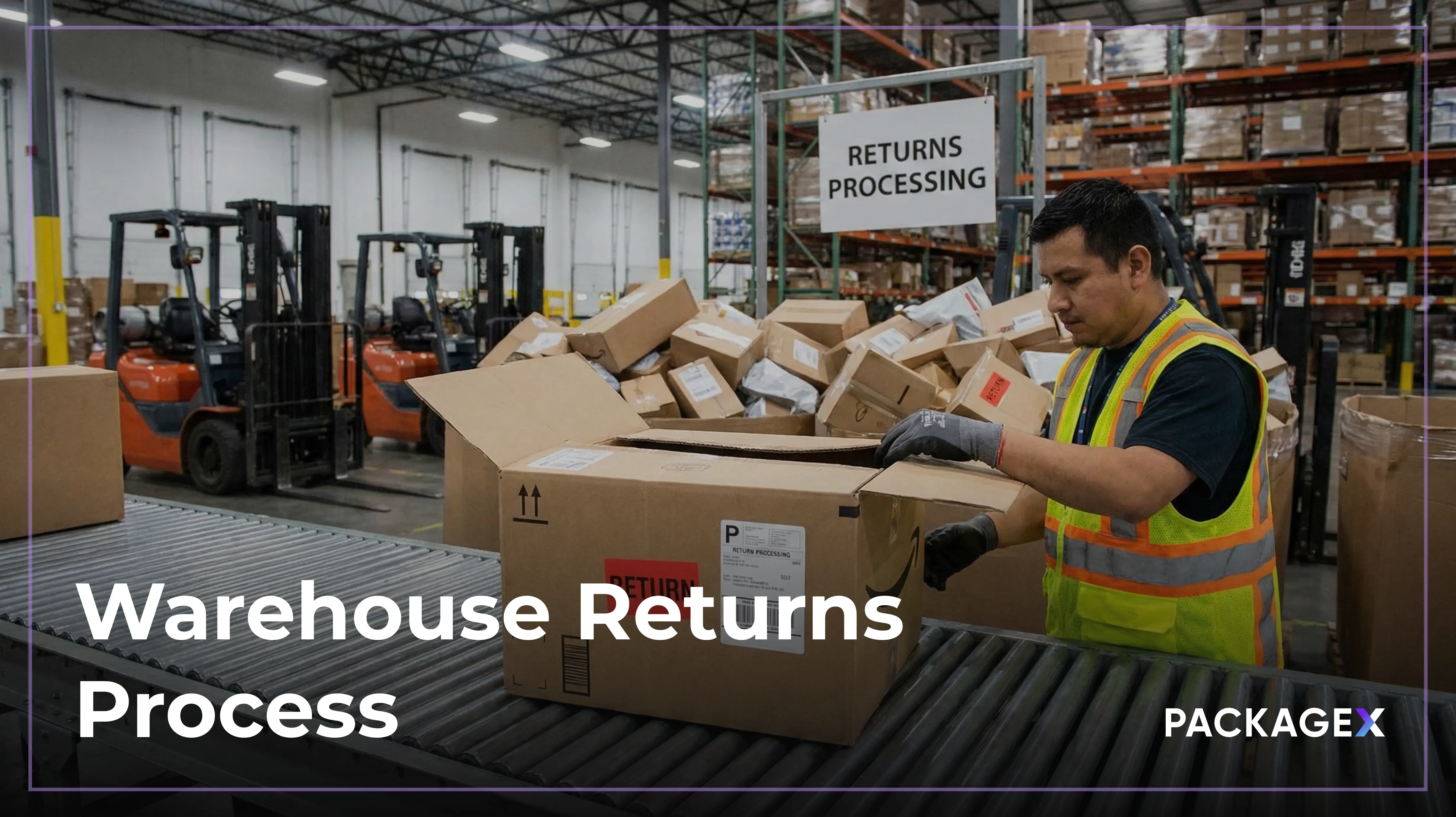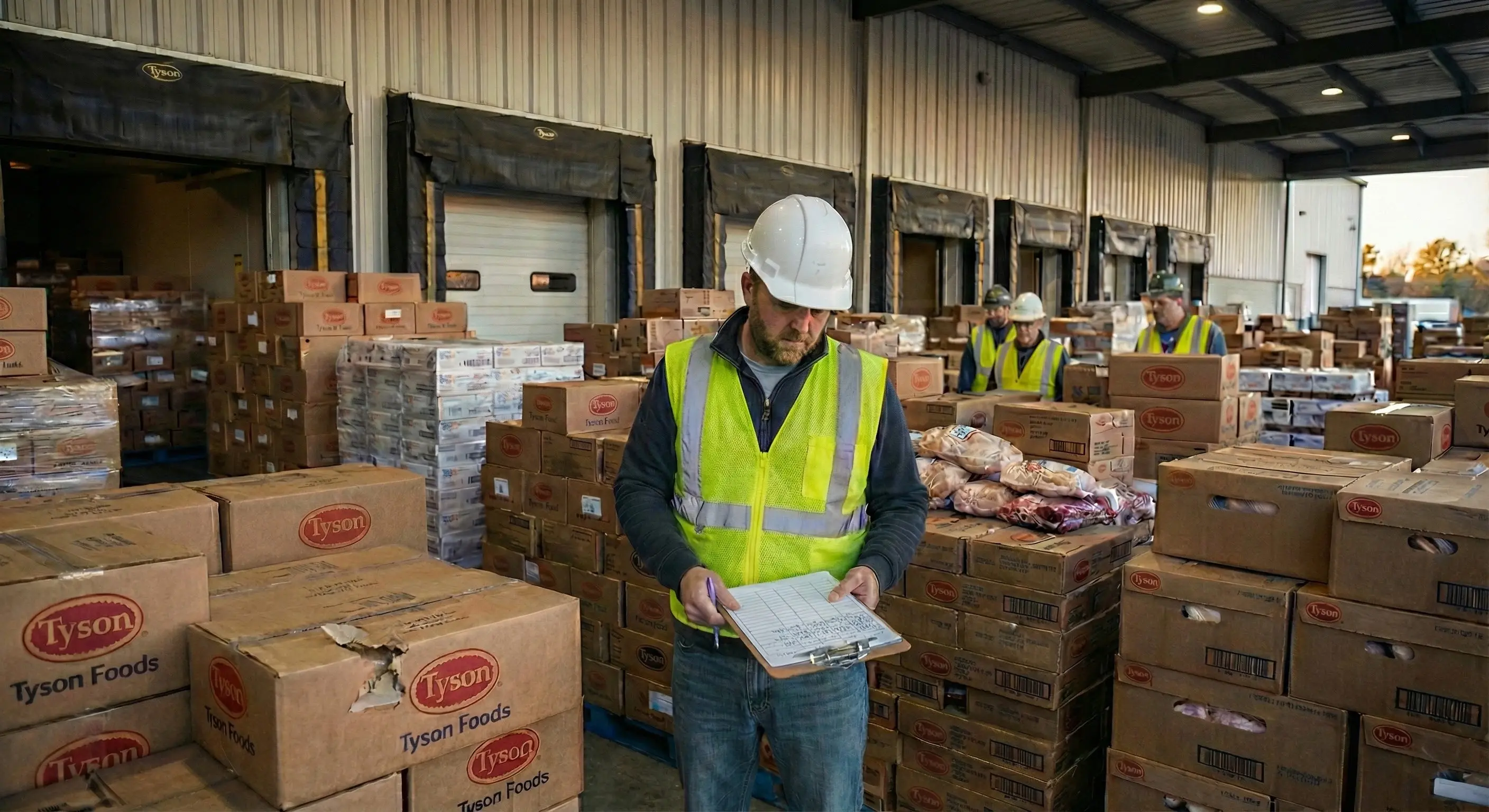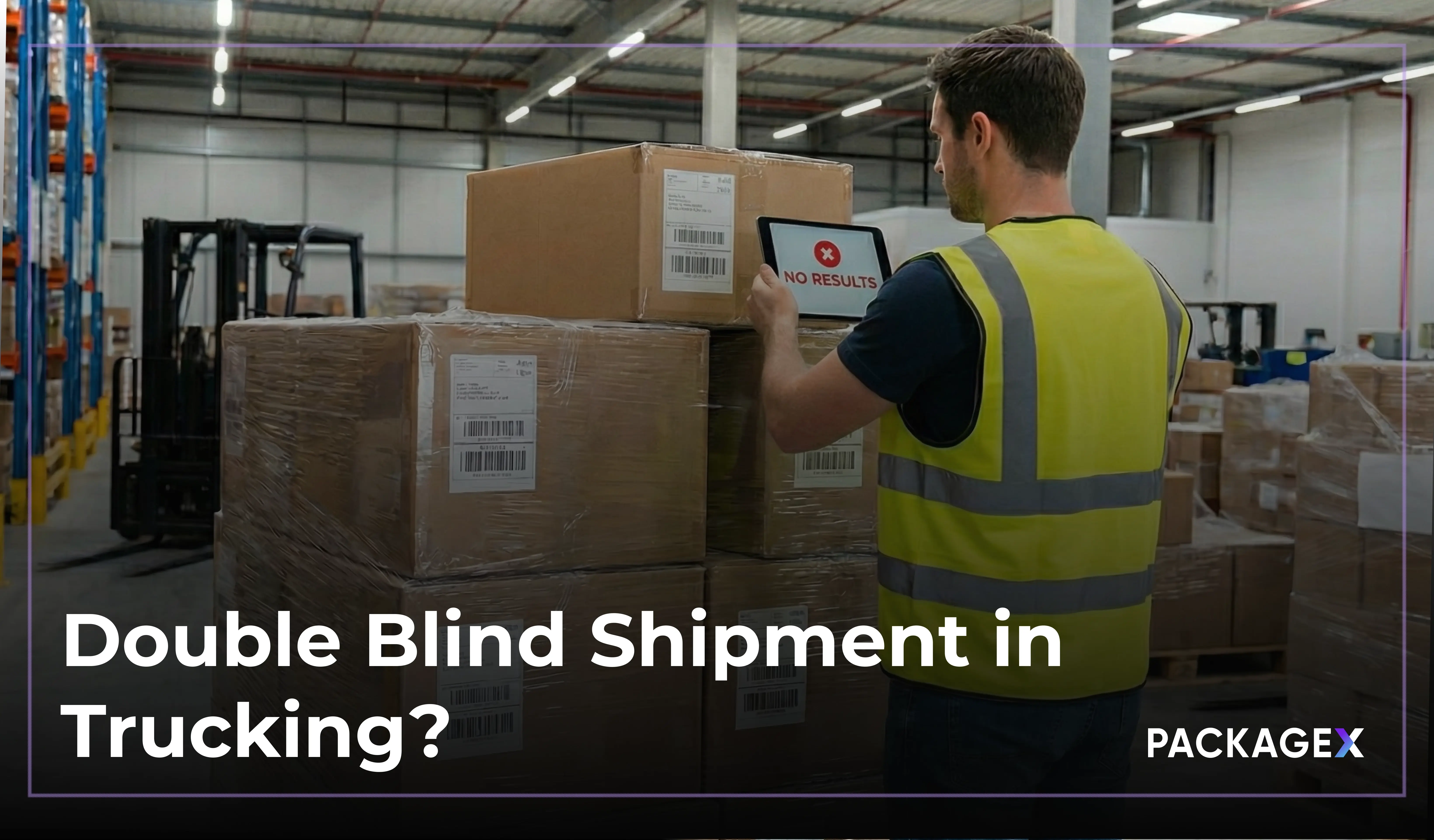The global fulfillment services market is projected to reach USD 272.14 billion by 2030, growing at a CAGR of 14.2 percent from 2025 to 2030. This growth reflects how essential fast and reliable fulfillment has become in today’s digital economy. As online orders increase, sellers must manage their inventory, package products efficiently, and ensure timely delivery to meet customer expectations.
A fulfillment center steps in to handle these tasks with precision and consistency. By working with a 3PL fulfillment center, sellers can depend on advanced systems that manage every stage of the process without delays.
An e-commerce fulfillment center also provides real-time updates and inventory management. This transparency improves customer satisfaction and reduces errors.
This allows businesses to stay focused on growth while minimizing logistics challenges and keeping fulfillment operations under control.
What Is a Fulfillment Center?
A fulfillment center is a specialized warehouse where order fulfillment for tangible goods is managed. It handles the complete process of storing products, picking items, packing them, and shipping orders to customers.
In e-commerce fulfillment, these centers act as a vital part of the supply chain, connecting online sellers with buyers. They take care of logistics so businesses can focus on sales, marketing, and product growth.
When deciding how to fulfill orders, brands can either manage their own facility or work with a third-party provider. Outsourcing to a fulfillment center helps ensure faster deliveries, accurate shipments, and a better customer experience.
Key Functions of a Fulfillment Center
In a nutshell, a fulfillment center, like an Amazon fulfillment center, is basically a service that takes care of packing and shipping the products your customers buy. It’s like having a team that handles all the logistics needed to get an online order delivered right to someone’s doorstep. This means you don’t have to deal with the hassle of packaging, addressing, and shipping every single order yourself.
Here are some major functions of a fulfillment center:
Receiving and Storage:
A warehouse fulfillment center receives inventory directly from suppliers and organizes it for easy access. This ensures fast processing and accurate stock handling from the start of the e-commerce order fulfillment cycle.
Order Processing:
The logistics provider collects orders from online platforms or integrated systems. Once received, the system verifies item availability and routes the order for picking and packing.
Picking and Packing:
Pick and pack fulfillment is a core step in the order fulfillment process. Staff locate the right products in the product fulfillment center, pack them securely, and prepare them for shipment. This stage prioritizes speed, accuracy, and safe handling to reduce errors and avoid product damage.
Shipping:
Once packed, the order is handed off to a carrier for delivery. A well-run fulfillment center works with multiple shipping partners to offer flexible, on-time delivery options.
Inventory Management:
Most centers use real-time tracking tools to monitor stock levels and movements. This helps prevent overselling and keeps sellers informed about their inventory status across all sales channels.
Returns Processing:
If an item is returned, the center inspects, processes, and restocks it as needed. This ensures the order fulfillment process remains smooth, even when handling reverse logistics processes.
Fulfillment Center vs Warehouse
At first glance, a fulfillment center and a warehouse might seem similar, as they both store inventory. But the roles they play in fulfillment management are very different.
A warehouse is built for long-term storage. Products sit in one place until they’re needed. Products are often moved in bulk on less frequent shipping schedules. This setup works well for wholesale or seasonal stockpiling.
A warehouse fulfillment center, by contrast, is fast-paced and focused on order flow. It’s designed for short-term inventory movement, where products are constantly coming in, getting processed, and going out. This is where pick and pack fulfillment takes center stage. Each item is received, sorted, picked, packed, labeled, and shipped, often within hours.
Unlike traditional warehouses, fulfillment distribution centers manage high volumes of individual orders. They work closely with shipping carriers for fast, cost-effective delivery, often offering same-day or next-day service.
If you’re comparing a fulfillment center vs a warehouse distribution center, the key difference lies in scope. Fulfillment centers handle direct-to-consumer shipping with a full stack of logistics services. Distribution centers move products in bulk between business locations, often skipping the last-mile delivery.
Benefits of Using a Fulfillment Center
If you’re considering the pros and cons of using a fulfillment center, here are some clear advantages to help you make the right decision.
Reduced Operational Load
Running your own storage and packing operation is expensive and labor-intensive. A fulfillment center helps streamline these tasks.
- Scalable storage through a warehouse fulfillment center that grows with your needs
- Access to a trained workforce for order handling and packing
- Reduced operational stress so you can focus on growth and fulfillment management
Trusted Logistics Expertise
Fulfillment centers bring years of experience to handling logistics from end to end. They take over fulfillment management so you don’t have to.
- Professional handling of order processing, picking, packing, and shipping
- Efficient real-time inventory management that avoids stockouts and overselling
- Peak season planning and execution without disruption
Streamlined Order Processing
A modern fulfillment distribution center integrates directly with your ecommerce platform to keep operations seamless.
- Orders are automatically sent to the fulfillment center for processing
- Products are picked, packed, and shipped with minimal delays
- Real-time tracking keeps customers and businesses updated
Reduced Shipping Costs
Shipping is a major fulfillment expense, but fulfillment centers help bring those costs down through strategic practices.
- Pre-negotiated shipping discounts with major carriers like UPS and DHL
- Warehouse fulfillment centers near metro areas reduce delivery times
- Distributed inventory models lower last-mile shipping costs
Access to Advanced Technology
Fulfillment centers invest in tools that optimize storage and shipping accuracy through high-end warehouse management systems.
- Real-time inventory management powered by WMS platforms
- Use of automation and robotics to speed up fulfillment tasks
- Seamless ecommerce integrations for complete fulfillment visibility
Focus on Core Business
Handling order fulfillment in-house takes time and focus away from strategic growth. A fulfillment center removes that burden so you can focus on what truly matters.
- Spend more time on marketing, product development, and customer service
- Avoid the stress of managing daily logistics tasks
- Strengthen business growth by outsourcing fulfillment management to experts
Enhanced Customer Experience
The right fulfillment setup improves every step of the customer journey by making delivery fast, predictable, and easy to track.
- Shorter delivery times through optimized warehouse locations
- Live tracking provides transparency from checkout to doorstep
- Efficient handling of returns strengthens customer trust
Challenges of Using a Fulfillment Center
While a fulfillment center offers speed and efficiency, it’s important to consider the potential drawbacks before outsourcing your operations.
Higher Costs
Fees for receiving, storage, packing, and shipping can add up, especially if inventory turnover is slow. To manage this, keep a close watch on your inventory management and adjust forecasts to avoid unnecessary storage.
Less Control
Outsourcing limits your ability to oversee how products are handled and packaged. If your brand relies on custom touches, choose a warehouse fulfillment center that offers branded packaging and flexible handling options.
Risk of Errors
Order mistakes and stock discrepancies can happen. Strong fulfillment management practices, including regular audits and real-time tracking, can help maintain accuracy and reduce customer complaints.
Operational Dependency
Your business may face disruptions if your provider experiences delays or outages. Reduce risk by partnering with a fulfillment distribution center that has a solid track record and clear backup plans.
Limited Branding Options
Standard packaging can dilute your brand identity. Ask your logistics provider about options like branded boxes, inserts, or thank-you notes to enhance the customer experience.
Inventory Visibility Issues
Relying on third-party systems can cause stock mismatches. Integrating your warehouse management and inventory tools with the fulfillment center ensures you get accurate, real-time updates.
Optimize Your Fulfillment Operations With PackageX
PackageX helps fulfillment teams move faster, work smarter, and reduce manual effort. Its AI-powered tools simplify every stage of fulfillment while keeping operations accurate and connected. With built-in logistics APIs, automated tracking, and quick setup, it removes complexity and boosts efficiency without disrupting your workflow.
Here’s how PackageX supports your operations:
- Automates fulfillment management with real-time updates and smart scanning
- Improves inventory management across warehouse fulfillment centers
- Integrates easily with ecommerce platforms through ready-to-use APIs
- Reduces delays with automated tracking and live order visibility
- Supports fulfillment distribution centers without custom development
PackageX offers a flexible, scalable logistics platform built for modern supply chains. Whether you're optimizing a fulfillment center for a small business or managing multiple sites, it brings control to every part of the process.
FAQs
What is the difference between Amazon warehouse and fulfillment center?
An Amazon warehouse stores inventory for longer periods, while an Amazon fulfillment center focuses on picking, packing, and shipping customer orders quickly. A warehouse fulfillment center like Amazon’s is optimized for fast-moving inventory and same-day or next-day delivery.
What does a fulfillment company do?
A fulfillment company handles inventory management, order processing, packing, shipping, and returns. By using a fulfillment center package, businesses can outsource their logistics and focus on growth. This includes both B2B and DTC fulfillment.
Where do fulfillment centers ship goods?
Fulfillment centers ship products to both retail locations and directly to consumers. A fulfillment distribution center supports B2B shipments, while a fulfillment center handles DTC orders across local, national, and international destinations.
Is a fulfillment center worth it?
Yes, especially for growing businesses. Instead of managing your own warehouse, a fulfillment center reduces overhead, improves delivery speed, and scales with demand. A good fulfillment center package can save time and money in the long run.
Can you give a fulfillment center example?
A great fulfillment center example is a third-party logistics provider that stores your products and ships them directly to customers. Amazon FBA is a well-known model, but many ecommerce brands use independent fulfillment centers for more flexibility.




